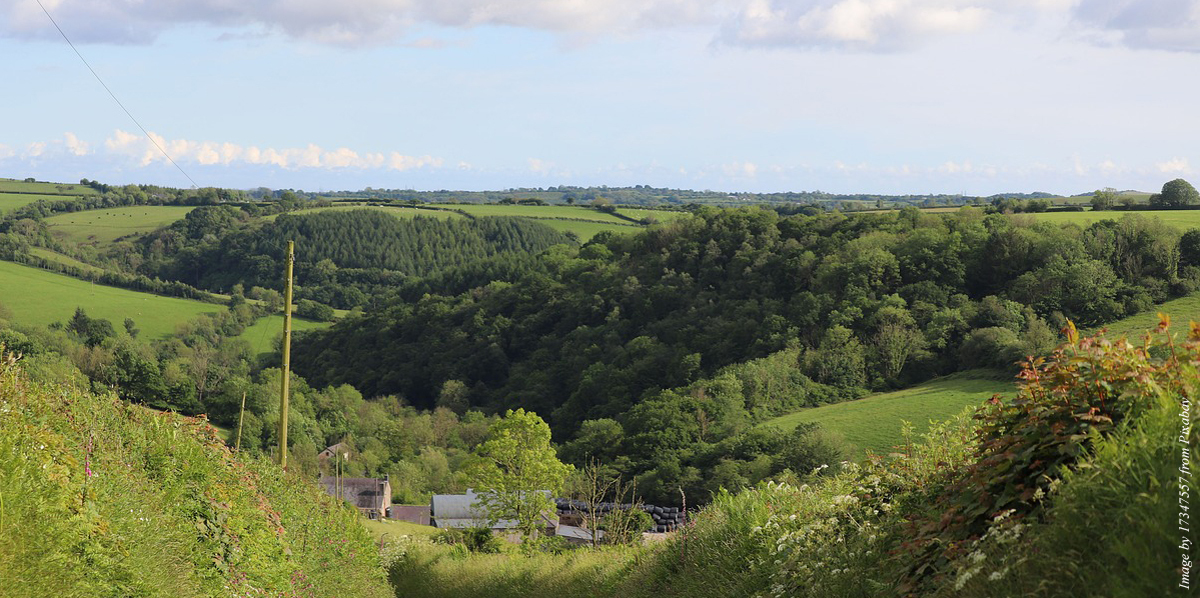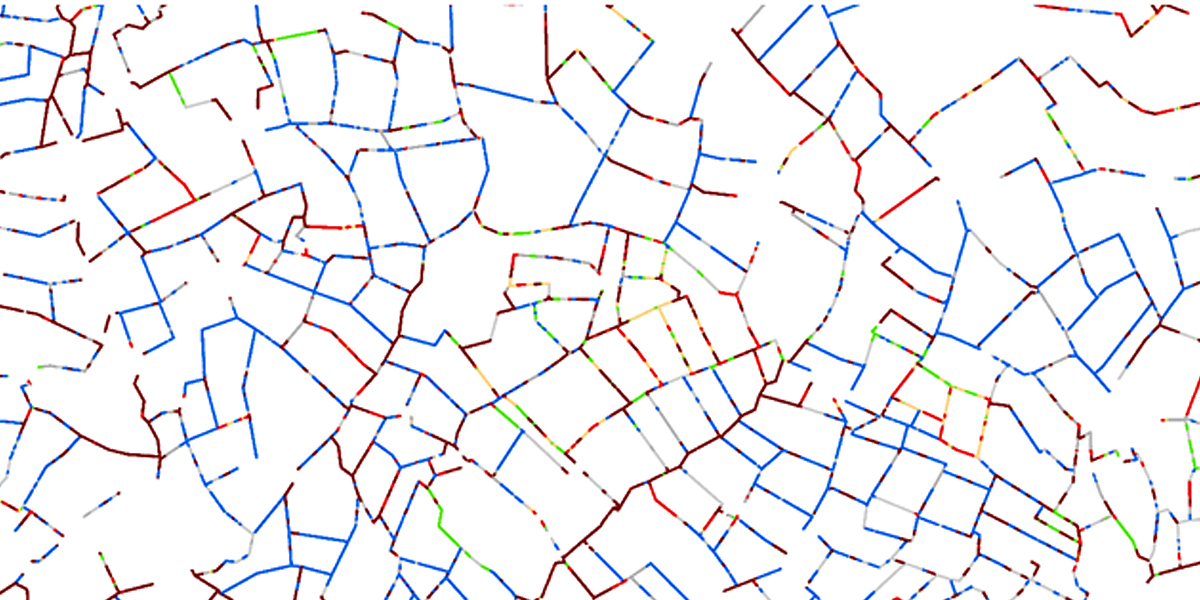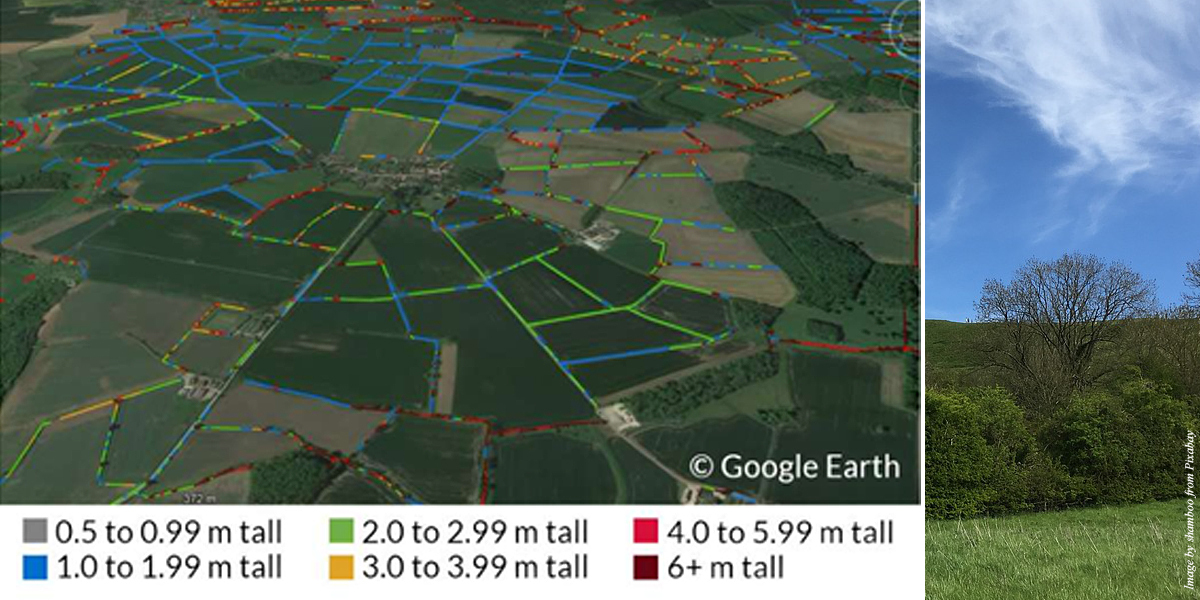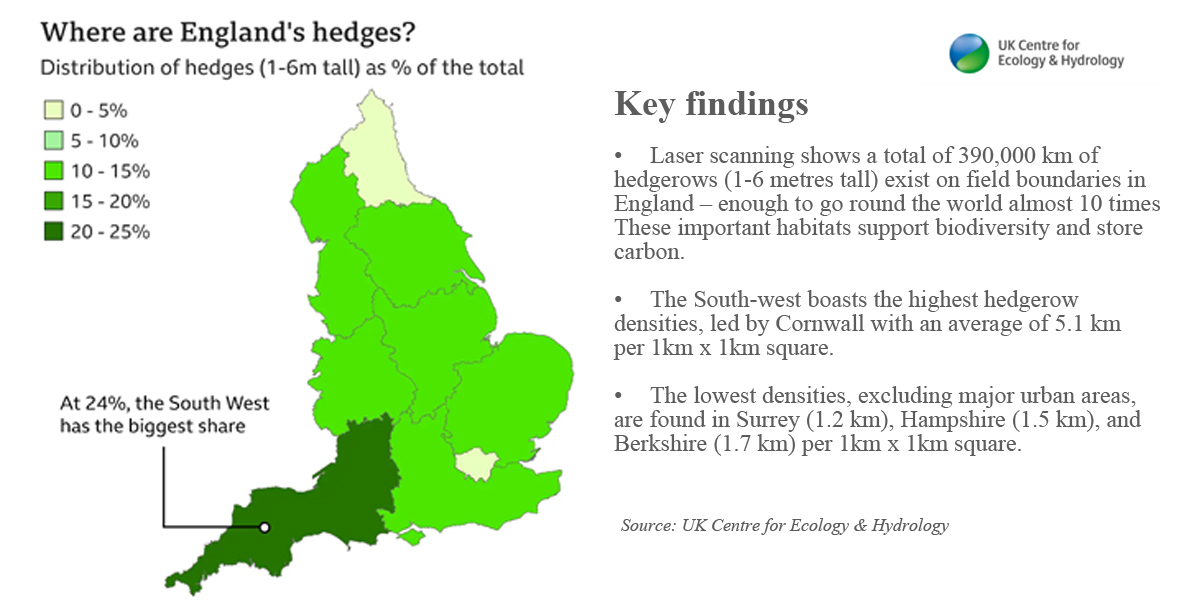Scientists have harnessed cutting-edge technology to produce the most comprehensive map of hedgerows across the length and breadth of England.

The researchers at the UK Centre for Ecology & Hydrology (UKCEH) hope this innovative mapping will guide planting and restoration of these vulnerable habitats to support wildlife and mitigate climate change.
Hedgerows have been integral to our rural landscape since the Bronze Age, traditionally marking out boundaries and keeping in livestock. They contain hundreds of plant species, provide homes for nesting birds, small mammals and insects, and can capture and store large amounts of carbon.
However, approximately half of Britain’s hedgerows were lost between the 1940s and 1990s, mostly in England, due to development and agricultural intensification. Recent years have witnessed a new threat – a lack of maintenance, resulting in gappy hedges or overgrown lines of trees.
Dr Richard Broughton, who led the UKCEH hedgerow map project, says: “Hedgerows are not only an intrinsic part of England’s rural heritage, they can also be a real asset in helping to tackle the biodiversity and climate crises.”
About the data
Mapping the country’s hedgerows is difficult due to the scale involved, and previous analyses have relied on estimates scaled up from field surveys of smaller areas. UKCEH’s new map, derived from aerial laser scanning of England’s entire landscape, serves as a baseline for the amount of hedgerow, as well as providing important new detail.
It not only provides precise information on the quantity and length of hedgerows, but also reveals height measurements for the first time – a crucial indicator of hedge quality.
The data will be important to guide future habitat restoration. In its Environmental Improvement Plan, the Government has pledged to support farmers to create or restore 30,000 miles of hedgerows a year by 2037 and 45,000 miles a year by 2050.


Dr Broughton notes: “The new map enables us to see where hedgerows are sparse and identify sites for targeted planting and restoration efforts, linking up habitats and improving the hedgerow network. It can also be used to estimate the potential amount of carbon that hedgerows could remove from the atmosphere and store.”
Most hedgerows, whether managed or unmanaged, are between 1 and 6 metres in height, and the new UKCEH data calculates there are 390,000 km of such hedgerows in England.
Additionally, UKCEH identified another 67,000 km of lines of vegetation below 1m, which may be degraded, cut or newly-planted hedges, and a further 185,000 km above 6m tall, which includes mature hedgerow trees and many overgrown hedges that have become lines of young trees.
Surrey, Hampshire and Berkshire have some large towns and motorways, areas of open hilly countryside and lots of woodland, so while they are well-wooded counties they have relatively less arable farmland surrounded by hedgerows.

About the technology
The step-change in hedgerow monitoring was made possible by the Environment Agency’s release of LIDAR (Light Detection and Ranging) remote sensing data for the whole of England, collected over five years as part of its national mapping work.
UKCEH scientists used the JASMIN super-computer to process the vast amount of data from across England.

Dr Broughton anticipates that advances in satellite and drone technologies will improve the quality and availability of mapping images, making it possible to carry out detailed remote surveys more quickly and easily.
How data was collected and analysed

As part of the Environment Agency’s mapping programme, aircraft such as those pictured above flew over the whole of England between 2016 and 2021, carrying sensors to scan the ground. The Light Detection and Ranging (LIDAR) remote sensing method was used to detect structures on the ground. A beam of light in the form of a pulsed laser is fired over the ground, and then the time it takes to return indicates whether there are structures there and their dimensions.
UKCEH scientists identified vegetation on field boundaries that was at least 0.5 metres tall, and within that they extracted features that corresponded to the heights of hedgerows, at 1-6 metres tall. Processing and classifying these features produced a much more accurate map of all the hedgerows across England than has been available before.
The scientists excluded certain land cover types – urban, suburban, mountains, moors, heath, coastal and open water – because these areas contain very few hedges, so any detected linear features were very likely to be something else, like rocks, drystone walls and urban infrastructure.
UKCEH carried out on-site field surveys to check the LIDAR data and found there was a 96% accuracy when comparing total length of hedgerows across all 1km x 1km squares surveyed, plus a very high degree of accuracy when comparing lengths on individual squares.
More information
To delve deeper into the importance of hedgerows, UKCEH has recorded a podcast as part of its new series Counting the Earth. It includes interviews with Dr Jo Staley and Dr John Redhead of UKCEH, Devon farmer Robert Wolton and hedge-layer Alex Musson.
UKCEH’s Land Cover Maps Plus: Hedgerows dataset is available to download from the Environmental Information Data Centre website.
This groundbreaking new map was produced as part of the AgZero+ programme funded by UK Research and Innovation. AgZero+ is providing data, models and tools to support the transition to sustainable, low carbon farming systems.
Story Source: UK Centre for Ecology & Hydrology
Subscribe to our newsletter
Stay updated on the latest technology, innovation product arrivals and exciting offers to your inbox.
Newsletter

